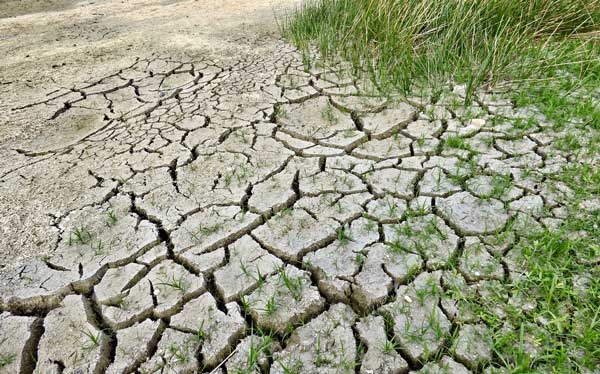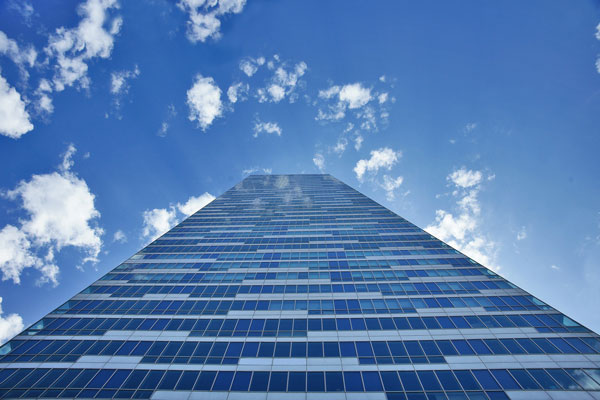
“[T]he human influence on the climate system is clear and is evident from the increasing greenhouse gas concentrations in the atmosphere, positive radiative forcing, observed warming, and understanding of the climate system.” That is the conclusion in the Fifth Assessment Report by the Intergovernmental Panel on Climate Change (IPCC).
Established in 1988, the IPCC is the leading international body that assesses climate change. It counts 195 countries as its members, highlighting how addressing the impact of climate change on the environment and societies has become a concern for many governments around the world. While action at the government level does play a huge part in dealing with the challenges of climate change, we can also take action at the city level or even individual level.
In facilities management, the resiliency of buildings to climate change is becoming a hot topic. The rise of smart technology in building operations has allowed facilities managers to optimize operations, make better use of resources and better manage energy consumption.
While smart technology does make buildings greener, dealing with the possible impact of climate change on building operations goes beyond sustainability.
Here is why building resiliency is so important, and what facilities managers can do to make their buildings more resilient.

The Reality of Climate Change
NASA defines climate change as a phenomenon that “encompasses global warming, but refers to the broader range of changes that are happening to our planet… [including] rising sea levels, shrinking mountain glaciers, accelerating ice melt in Greenland, Antarctica and the Arctic, and shifts in flower/plant blooming times.”
The consequences of climate change will vary according to geographical location, but in general, the effects of climate change include:
- Rising temperatures
- Rising sea levels
- Longer frost-free periods and growing seasons
- Changes in precipitation patterns
- More heat waves and droughts
While there is agreement in the scientific community on the reality of climate change, the extent of its effects is largely speculative. We already see and feel some of the effects, but we don’t know for certain how much temperatures and sea levels will rise or how exactly weather patterns will change in the future.
Even while global bodies and individual governments work to take action to mitigate climate change, we have to deal with how this phenomenon affects our everyday lives, especially considering that the effects of climate change will continue to be felt for years to come.
Edward Sullivan at FacilitiesNet believes FMs have a role to play: “Buildings are well-positioned to reduce carbon emissions. More energy-efficient building products, combined with best practices for design and operation, provide a wealth of cost-effective opportunities to reduce greenhouse gas emissions from buildings.”
Implementing smart technology to reduce the environmental impact of buildings has been a step in the right direction. But simply mitigating the causes of climate change isn’t enough. As our climate becomes less predictable, incorporating resiliency is the next step.
According to the Resilient Design Institute (RDI), an organization focused on creating more climate resilient buildings and communities, resiliency refers to “the capacity to adapt to changing conditions and to maintain or regain functionality and vitality in the face of stress or disturbance.”
Greg Zimmerman is of the view that “it’s critical to think of sustainability and resilience as complementary concepts.” He believes that “[t]he greenest building in the world is the one that doesn’t need to be rebuilt.”
The good news is that more and more organizations seem to be on board with this idea. As Facility Executive points out, a June 2015 survey by consulting firm Haley & Aldrich showed that about two-thirds of organizations are actively combining sustainability and resilience measures, with municipalities and universities among the most proactive.

The Value of Climate-Resilient Buildings
Evan Reis, executive director and co-founder of the U.S. Resiliency Council, summarizes the value of climate resilient buildings in this way: “Sustainability is about the building having a low impact on the environment. Resilience is about the environment having a low impact on the building.”
Climate-resilient buildings do more than just help the environment. Deborah Hanamura at Paladino and Company, a sustainability and green building consulting firm, says resilient buildings can provide:
- Community shelter offered by commercial buildings
- Employee and community safety
- Workflow continuity
- Supply chain continuity
- Uninterrupted operations
- Capability of going off grid with on-site water and electricity sources
- Sustained reputation
As Zimmerman notes, building owners and facilities managers should look at sustainability and resiliency measures hand-in-hand. An FM’s first concern should be ensuring that buildings can withstand the effects of unpredictable weather such as hurricanes and typhoons. Sustainability measures are secondary and are in place to support building resiliency.
Companies may think that incorporating resiliency strategies will cost them more. However, it is more likely that these measures (in conjunction with sustainability measures) will save costs. Andrea Ward and Alex Wilson at Building Green believe that resiliency measures don’t just have a positive effect on mitigating the effects of climate change; they argue that “quite a few [of these measures] reduce building operating costs or improve durability, benefiting building owners as well as the future of the planet.”

Building Resilience Into Your Day-To-Day Operations
To address the challenges of climate change on building operations, research and planning are necessary. As weather patterns and the effects of climate change are different in every location, there is no one-size-fits-all solution.
According to Karin Holland at FacilitesNet, the first step is to conduct vulnerability assessments. As a facilities manager, you already have an intimate knowledge of your building’s operations and performance, and how green your building currently is. Evaluate the readiness of your facility if faced with extreme weather conditions and note any gaps or areas that are lacking.
In order to add resiliency into the equation, do research on how the weather patterns in your region have been changing over time. A good place to start is the National Weather Service.
It may also be useful to track any new regulatory developments in your city or state with regards to building resiliency. There may be funding or grants available to help companies implement resiliency measures.
While the specific solutions for your facility depends on your geographical location and building needs, here are some general tips and ideas on how to build resiliency into areas such as temperature control, energy management and water efficiency.
Temperature Control
Rising temperatures is one of the main consequences of climate change. More heat waves and higher outdoor temperatures will inevitably increase the demand for air-conditioning in buildings.
How can buildings adapt to rising temperatures? John Davies, research director at the Cold Climate Housing Research Center, tells Building Green, “Heat-adaptive strategies differ markedly by climate — what makes sense in Phoenix, where temperatures in the summer of 2009 have exceeded 115°F (46°C), will be very different from what makes sense in the Arctic, where melting permafrost is already affecting foundation design.”
Some suggestions by Building Green include:
- Designing natural ventilation into buildings
- Raising cooling design temperatures used in energy modeling
- Designing landscaping to minimize cooling requirements and encourage natural ventilation
- Increasing the efficiency of lighting, office equipment, appliances and mechanical equipment so that less waste heat is produced
Energy Management
Given that greenhouse gas emissions are a top cause of climate change, it’s no surprise that optimizing energy use is a priority in building sustainability and resilience. In terms of sustainability, implementing IoT systems can help manage and optimize energy consumption in buildings. The less energy you use, the more resilient you are when you are cut off from the grid.
Building resiliency requires facilities managers to go an extra step, as extreme weather conditions such as storms, flooding and hurricanes can lead to power outages that affect buildings. Building Green suggests using renewable energy systems and implementing solar power systems to provide backup energy. The key is to reduce a facility’s dependence on a centralized electrical grid.
Another suggestion, from Billy Grayson, executive director of the Urban Land Institute’s Center for Sustainability and Economic Performance, is using microgrids because “[they] make it easier to consider how to integrate onsite renewables and energy storage.” Startups that are developing intelligent energy storage solutions, such as Geli, are at the forefront of providing the technology that aim to make buildings more resilient.
Water Efficiency
Rising temperatures and more heat waves increase the possibility of drought, which makes water efficiency a key facet of resilience in buildings. As Reis puts it: “If there is drought and less water availability, a building that uses less water, and has a system for using recycled water, is more resilient.”
Similar to energy optimization and management, managing your building’s water needs and usage is one way to make it more resilient to climate change. Implementing recycled water systems can make your building more resilient to water shortages.
Robin Guenther, principal at architecture and design firm Perkins+Will, shares with Facility Executive some ways that buildings deal with water shortages. These include implementing recycled water systems, using cisterns to capture and store water to use for irrigation during the summer months, and reducing the use of water intensive evaporative cooling systems.
Climate change is here, and it will undoubtedly affect our environment and lives. Building owners and facilities managers must be prepared for those consequences. In this era of unpredictable weather, it’s much better to be proactive. Choose to adapt, plan early and do what’s necessary to ensure that our buildings are strong, sustainable and resilient.
Credits:
geraltjodylehigh
Burst
Engin_Akyurt

